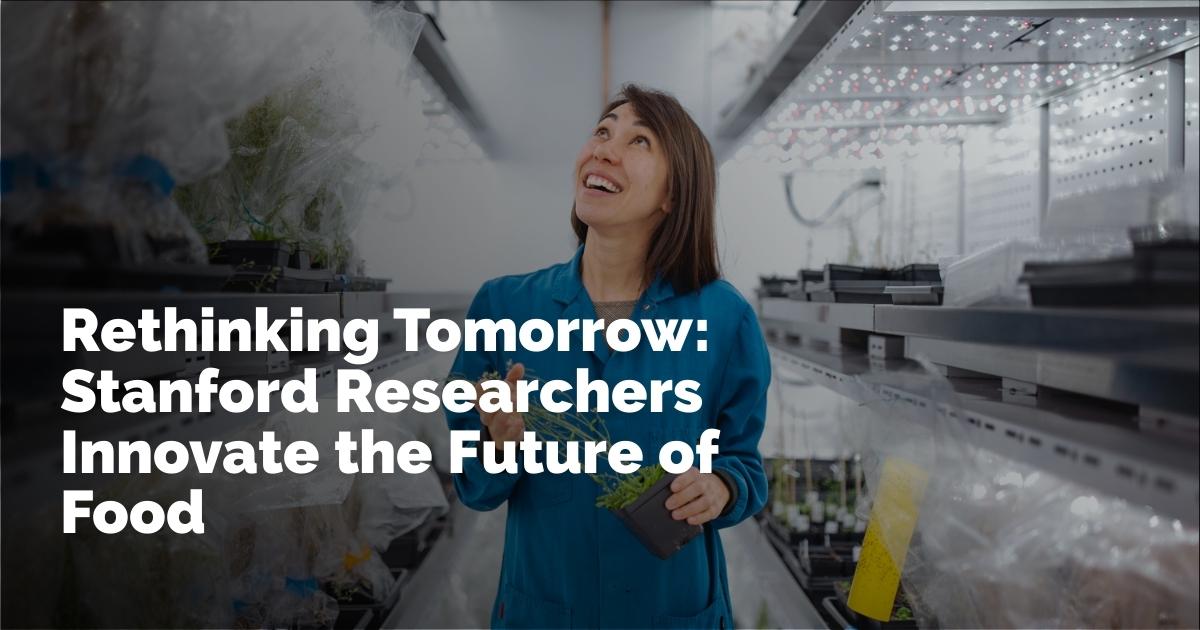Unpacking Adaptive Plant Systems: A New Frontier in Agriculture and Aquaculture
As our global food systems face increasing challenges from climate change and disease, cutting-edge research is uncovering ways to make them more resilient and sustainable. A core element in this evolution is our understanding of plants—how they grow, interact with their environment, and contribute to human nutrition. This understanding is not just foundational for agriculture but also touches on chemistry, biology, and environmental science.
Elizabeth Sattely, an associate professor of chemical engineering at Stanford’s School of Engineering, focuses her research on plant chemistry. Her work highlights how plants convert carbon dioxide and sunlight into robust molecules that enhance their resistance to environmental stressors while potentially benefiting human health. This research is crucial for developing climate-resilient crops and underscores the need for interdisciplinary collaborations at institutions like Stanford, where experts aim to solve pressing problems in global food systems.
Enhancing Crop Resistance and Nutrition
Crop loss due to disease continues to challenge global food security. Despite the introduction of pest-resistant crops and advanced farming techniques, the problem still looms large. Sattely and her colleague, Mary Beth Mudgett, a professor of biology, delve into the immune responses of plants and their communication via chemical signals. Understanding these processes can pave the way for crops with improved resistance to pests and diseases. These crops would not only be more resilient but could also have enhanced nutrient profiles beneficial to human diets.
Mapping Climate Change Adaptations in Agriculture
On a larger scale, David Lobell, professor of Earth system science at the Doerr School of Sustainability, employs remote sensing technology to assess how well agricultural practices adapt to climate changes. His research is pivotal, evaluating the effectiveness of techniques like cover cropping. While intended to protect soil and enrich it over time, these approaches can inadvertently lower land productivity—a trade-off that Lobell’s detailed farm-level analysis seeks to balance.
The need for responsible food production is stark. It's not just about creating abundant resources but ensuring they're nutritious and accessible. Without access to a balanced diet, people may overexploit natural resources, leading to biodiversity loss and compromised health outcomes, such as increased rates of diseases like diabetes in even lower-income regions.
Harnessing the Power of Aquatic Foods
Introducing a new dimension to sustainable food systems, Roz Naylor’s work emphasizes the integration of aquatic foods—fish, seaweed, and other marine plants—into mainstream agriculture. Her efforts, including co-chairing the Blue Food Assessment, highlight how expanding our food sources beyond terrestrial crops can offer nutritional benefits and promote ecological balance. Naylor’s research is particularly focused on sustainable aquaculture in countries like Indonesia and Kenya, advocating for a broader understanding of food that includes aquatic elements.
Naylor is also involved in initiatives addressing the multifaceted challenges related to ocean health, such as illegal fishing and labor abuses. These efforts align with broader agricultural issues, recognizing the often harsh working conditions faced by those in the food production sector, exacerbated by climate-induced weather extremes.
Empowering Communities Through Food Research
Stanford's engagement in food system research extends beyond global agriculture; it also touches on community health. Lisa Goldman Rosas leads efforts to combat food insecurity through culturally relevant programs such as Vida Sana y Completa, aimed at reducing diet-related health issues among Latina women. By collaborating with local food banks and health centers, her work provides evidence-based strategies that can refine public health policies.
Moreover, new faculty members like Vayu Hill-Maini are reshaping food innovation by merging gastronomy with science. His expertise spans biochemistry and synthetic biology, and his lab is set to explore fungi and fermentation in creating sustainable, appealing foods. Hill-Maini, once a professional chef, understands the necessity for foods that meet both nutritional standards and cultural and sensory expectations.
Integrating Indigenous Knowledge
Food systems are deeply woven into cultural fabrics, a concept championed by Rodolfo Dirzo and others at Stanford. They emphasize integrating Indigenous knowledge and practices into the university’s food research and scholarship. This includes fostering student engagement with Indigenous communities and exploring sustainable practices that these cultures have honed over generations. Stanford courses like A-dae Briones’ Tribal Food Sovereignty reflect this emphasis.
As discussed by Briones, Indigenous communities offer unique insights into regenerative farming and sustainability—lessons critical to overcoming today’s environmental challenges. This perspective highlights the often-overlooked contributions these communities can make to broader scientific and environmental narratives.
Bridging Disciplines Through Collaboration
Within Stanford, the focus on interdisciplinary collaboration is embodied by initiatives like the Stanford Food Institute and Food Futures. These platforms bring together students, faculty, and industry professionals to holistically tackle food challenges, from production to consumption. For Sattely and others, such collaborative approaches are essential in creating solutions for sustainable, equitable food systems.
In tandem, Stanford’s push for integrating diverse expertise extends into projects like Food@Stanford. Led by innovative thinkers like Ellen Kuhl, who explores AI applications in food production, these efforts aim to foster cross-disciplinary partnerships to address the complex layers within the food system.
Innovative Collaborations and Future Directions
The transformative potential of these initiatives lies in their collaborative spirit. By leveraging Stanford’s varied intellectual resources across engineering, environmental sciences, and the humanities, the goal is to reshape how we think about food, agriculture, and sustainability. This unified approach ensures that promising research can transcend academic boundaries, influencing broader societal change.
The vision is bold: a food system that not only feeds the global population but does so in a way that is equitable, sustainable, and deeply integrated with our planet’s ecological processes. By valuing collaboration and interdisciplinary research, Stanford is paving the way for pioneering breakthroughs that address the pressing food challenges of our era.
출처 : Original Source

